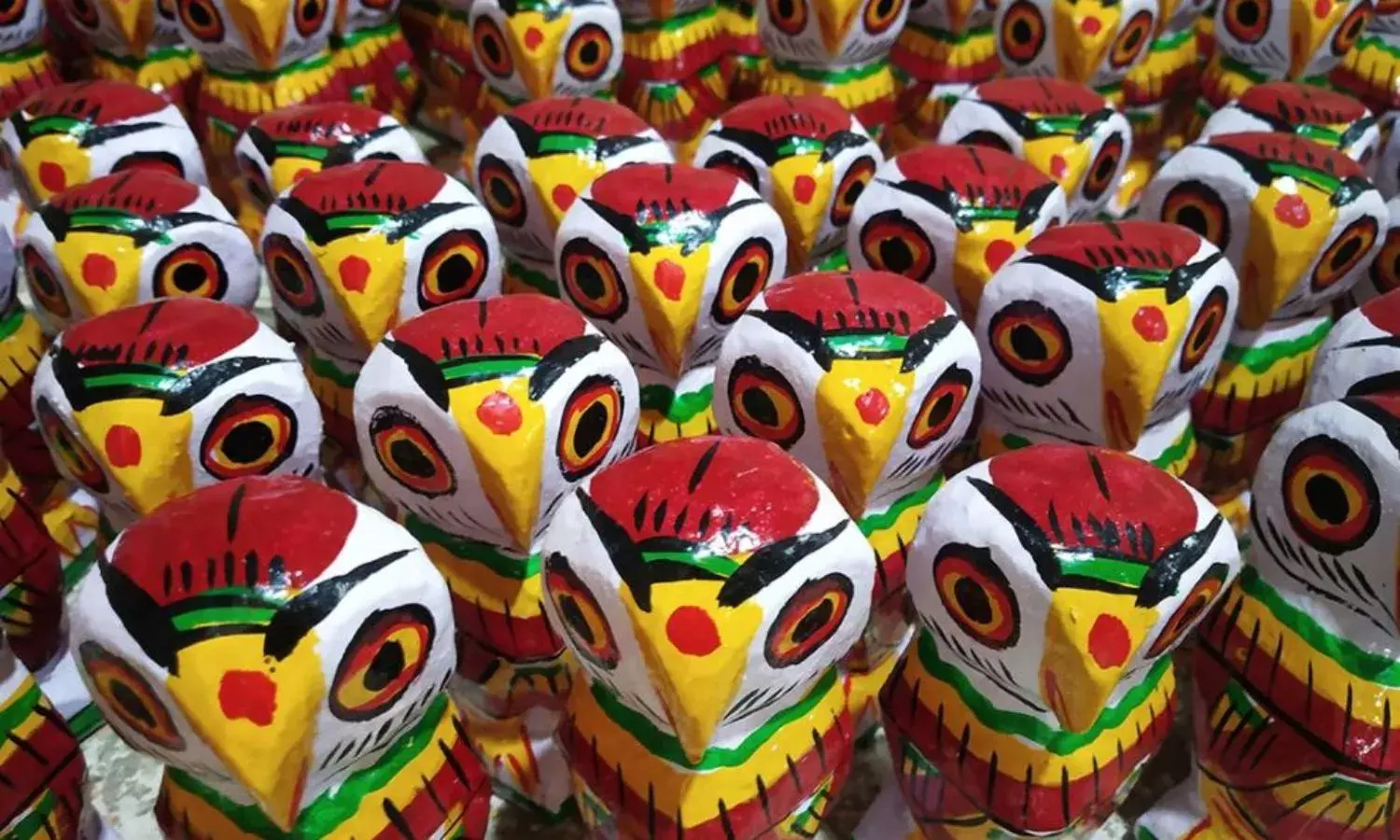The Wooden Dolls of Natungram
‘Most common in our village is the owl idol’;

Natungram rests in the lap of nature, clothed green. The colours of its wooden dolls are so vibrant it seems the entire village has been painted with these dolls. Together with men, women work on these dolls for their livelihood and so keep an ancient industry alive. Situated in East Burdwan, West Bengal, the entire village of Natungram is known for its world famous wooden dolls. As soon as you enter you see varieties of dolls painted in different colours lined up in front of each house. Natungram dolls are carved in wood and given a 3D shape, with various designs drawn on them.
Men of the village cut wood from various trees like mango and jackfruit and shape and design the blocks. The painting, arranging and selling is mostly done by women. They make idols and dolls of kings and queens. Their wooden sculptures of various gods have earned the most fame. For generations the people of Natungram have been known as sutradhars, storytellers or narrators, thread-bearers. But instead of words or wood or paper, this folk art began with stone. Long ago they say, their ancestors used to make stone idols, and used the name Bhaskar, one who works metal or stone. It is said their wood work first began at the request of the local king. A large number of artists started using the Sutradhar title, though a few still use Bhaskar.
Gaur Sutradhar says his family have worked this art for six generations. “We make various idols, but the most common in our village is the owl idol.” With skilled hands it takes about a week to complete one sculpture. His son Akshay Sutradhar too now helps his father at work. “We don’t get the proper value of this hard work. Still, it’s a family business and my heart wants to continue the art begun by my father–grandfather.”
Every home in the village is involved in this art. Women do the work of painting the dolls, and the lion’s share of work in selling them. Tourists keep coming to the village. In front of them women do all the work of serving the idol, handling the customers, keeping accounts. “I never did this in my father’s home, but after getting married I came to my father-in-law’s home and took a paintbrush in hand,” says Rupali, 38.
With the growing demand, people here also started making chairs, tables, clocks, and tea trays. But their distinctive colour work hasn’t faded. For the past several years, governments and organisations have been organising fairs to keep this art alive. The state government in association with UNESCO has developed Natungram as a Rural Craft Hub of the state.
Shambhunath, an artist from this village, who has received a prestigious award from the President of India, says his family members now hold workshops in various places to take the art forward into the future.
However, like other art forms, the coronavirus has brought danger to the lives of these artists. The pandemic has already taken away their business opportunities. All fairs have been closed for a long time. Tourists have been unable to come due to the lockdown. So they are facing problems. Their homes have a lot of spare dolls that have not been sold yet.
Meanwhile, the second wave comes as a new danger. Everyone is worried - “People don’t even know how to live in these difficult times,” says Vrindavan Sutradhar, another artist from the village. “I don't remember when the last fair was held, there was big business there. Then there were some smaller fairs after the lockdown. But there were not enough buyers, no sales.”
Absent the income from the dolls, Jaba Bhaskar, an artist opened a new grocery store in front of her house in the hope of a little income. Bhagyavati, another artist has stopped making new dolls. She will return to work once the danger is gone. On the other hand Haripriya, 19 years old, is optimistic. She is her father's constant companion in this work, and helps her mother paint while keeping her own studies going.
To visit Natungram you can travel by local train to Agradwip or Katwa and then onwards by road. You can also visit while on a trip to Shantiniketan, from where it is a couple hours’ journey by road. Some of the artists also offer paid accommodation and meals in their workshop-homes.

